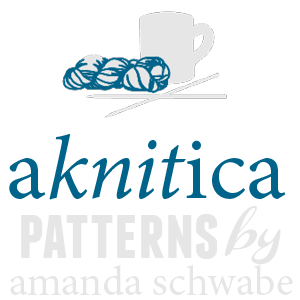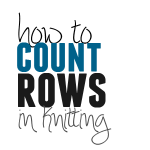
So how do you know which yarn to choose for your project? Well, there are many options. Let’s talk about them.
But first, does it have to be the yarn suggested by the designer? No. No, it does not. But it should probably have some similarities.
The qualities to look for when choosing yarn for your project
Fiber content. What the yarn is made of affects so many things: how to wash it, how it drapes, how it feels, and how it lasts. Try to choose a yarn with a similar fiber content to the one suggested. It doesn’t have to be identical. Just not opposite. For instance, if you’re knitting something lacey or cable-y, choose something you can block to shape, like a wool or cotton. Acrylic will just spring back into its original form and won’t hold blocking. Very sad. (More on blocking later this month.)
If you want something cozy that also breathes, choose wool or superwash wool.
If you want something super drapey, choose bamboo (viscose), silk, or cotton, or a blend that includes them.
If you want something machine washable and dryable, choose acrylic, cotton, bamboo, or superwash wool.
If you want something luscious that will look amazing forever, choose cashmere, wool, silk, or a blend thereof.
If you want something super soft, choose merino (a type of wool), alpaca, cashmere, silk, a nice acrylic, a nice cotton, angora, mohair… The list could go on. There are so many gorgeous yarns out there.
If you want a workhorse yarn for making dishcloths, cheap cotton is the way to go.
If you want a workhorse yarn for making warm outerwear that’ll get dirty and used and worn lots, use any old 100% wool with multiple plies. (Plies are strands all twisted together.) If it’s itchy, it’s okay because it won’t be worn next to the skin.
If you want to make chemo caps or something for sensitive skin, use something soft and luscious with no hairs. Use the “soft” list above, but scratch off alpaca and mohair. They have hairs in them that make many people itch.
If you’re making baby soakers or longies, 100% wool is the only way to go. Keep in mind that wool refers to all animal fibers, not just sheep’s fleece. I love wool, but I’ll have to save my reasons for a different post.
Yarn weight. The term “weight” here actually refers to the yarn’s thickness. You’ll want to find a yarn that’s the same weight as the one the designer recommends. Yarns can also be classified by their gauge: how many stitches per inch they knit up to. The standard North American weights, in order from finest to thickest, are
- Lace weight
- Fingering weight or Sock weight
- Sport weight or Baby weight
- DK weight or Light Worsted
- Worsted weight
- Heavy worsted or aran
- Bulky
- Super bulky
Sometimes, they get grouped together, but I really do find there’s a difference between Worsted and Aran. Also, lace weight can be found as super-fine cobweb lace or slightly heavier lace, but they’re all grouped together in one inadequate category.
Colour. This is really a personal choice, so I have only one thing to say: If you’re going to spend hours working an intricate stitch pattern (lace or cables come to mind), don’t use a variegated yarn. All those colours will just drown out your fancy stitches. What a waste.
And those are the basics. A quick primer in yarn choices. Did I miss anything? Leave me a comment and let me know what you think.
This post is part of my 31 Days to Your Nicest Knitting series. Every day, I’ll post a new tip or trick to make your knitting nicer. You can follow along easily by subscribing. If you have any knitting problems you’d like me to fix, let me know and I’ll try to answer your question as part of the series. You can find all the posts in the series here.








